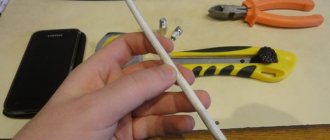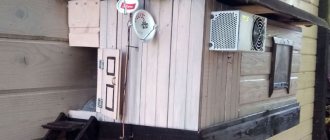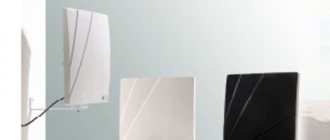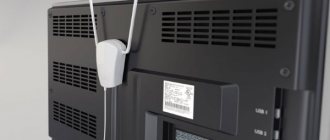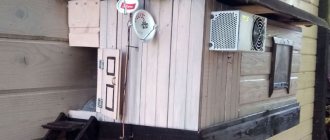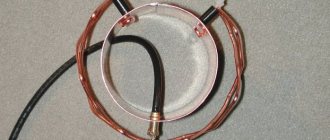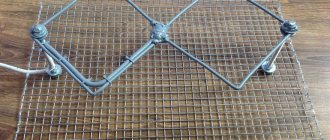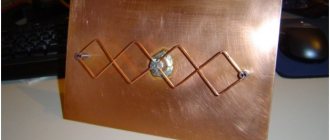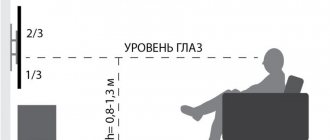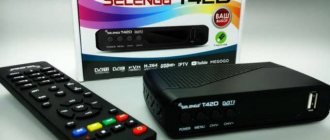Quite often in the comments, when answering questions about a “scattering” picture or periodically disappearing, you have to explain that the main reason for such distortion is a weak signal. The antenna’s own gain is responsible for its level, if it is passive or, if active, the antenna amplifier for DVB T2 digital television.
The issue of increasing the signal level is being resolved by replacing the amplifier with a more powerful one, that is, with a higher gain (dB), for active antennas with the possibility of changing it. Passive antennas, both indoor and outdoor, need to be replaced, or an additional television antenna signal amplifier must be installed. Let's start with the passive ones.
Installing an amplifier on a passive antenna
The antenna’s own design is responsible for the level of the output signal, and it is not possible to change it. The problem can be solved by installing an additional antenna amplifier for digital television on the cable.
They can be divided into two types:
- with 12 volt power supply;
- with 5 volt power supply.
They can also be further divided into two types;
Broadband antennas include antennas with amplification in both the meter and decimeter ranges with frequencies of 47-862 MHz. Band ones amplify the signal in one sector, in this case the decimeter sector with frequencies of 470-862 MHz, on which DVB T2 digital television is broadcast (DVB T is an outdated standard).
Below are the dvb t2 digital television signal amplifier Locus LA-32U. This can be concluded from the labeling. The 5 volt power supply allows you to power it directly from the set-top box.
Signal amplifier amplifier dvb t2 signal locus LA-32U
The amplifier is housed in a housing with F-type connectors for easy installation into the cable section.
Characteristics of Locus LA-32U:
- Gain - 20 dB;
- Noise - 2.5 dB;
- Power - 5 v.
The second amplifier, Sanor AMP-22V5, is a broadband amplifier. Don't let the DVB T label confuse you; the frequency plays a role here, not the broadcast standard.
Characteristics of Sanor AMP-22V5:
- Gain - 20 dB;
- Noise - 2.5 dB;
- Power - 5 v.
I’ll give you another dvb t2 signal amplifier with a 12 volt power supply - this is AMP101 from GAL with a gain of 20 dB.
Such a television antenna signal amplifier can be used both in urban and suburban conditions, for example in a country house, in cases where it is necessary to slightly improve the signal quality without changing the antenna itself.
Delta design and parameters
It is known that the delta antenna has the properties of several types of devices at once, since its design is a combination of a half-wave and log-periodic dipole. This feature makes it possible to implement in one product the possibility of all-wave signal reception from transmitting stations.
Antenna for router
These receivers take advantage of both types of designs; Moreover, the various parts of the structure are perfectly coordinated with one another. As a result of this combination, it is possible to obtain a universal antenna with minimal losses from the mutual influence of individual components and improved reception characteristics.
Important! At the same time, the developers managed to agree on the parameters of the supply cable, suitable for all existing frequency ranges.
- Digital terrestrial television in Novosibirsk and the region. How to watch and what you need for this
An outdoor antenna of this class has the following main characteristics:
- Received frequencies cover the MV and UHF ranges;
- Effective gain (CA) – 3-14 dB;
- Attenuation coefficient (AC) in the lateral and rear directions – 12 dB;
- The characteristic impedance of the cable is 75 Ohms.
Additional Information. The KZN in this design refers only to the decimeter component of the entire antenna.
The spread in gain values indicates different gain levels for different parts of the frequency range, and dips mainly occur on meter channels. Since modern television broadcasting has a steady tendency to reduce them, there is no need to worry about this at all.
To increase the KZN in the UHF range, it is possible to modify the Delta antenna, which consists of equipping it with a special reflector, which is placed between the meter and decimeter parts. Those who have converted their antenna into a reflector know well that this element is made in the form of a special grating that attenuates the signals from the rear lobe, thereby increasing the overall gain (see photo below).
Delta with reflector
Note that all the parameters discussed above relate to passive types of antennas that do not have built-in television signal amplifiers or are designed as a separate module. As a result, the scope of application of such structures will be limited to areas that have direct visibility to the transmitting equipment.
Amplifiers for active antennas
The most common of them are SWA amplifiers. Such antenna amplifiers for digital television dvb t2 are the main ones for the so-called “Polish” antennas or “arrays”.
No matter how much people criticize this amplifier, it performs excellently when receiving over long distances; the main positive quality is that it can withstand close lightning discharges. But SWA555 and SWA777 have proven themselves extremely negatively. They fail not just because of a thunderstorm, but just like that.
They are powered by 12 volts from a separate power supply.
LSA amplifiers were produced for repairing Locus antennas. The main reasons why they fail are a lightning strike, a malfunction of the power supply and sometimes a violation of the seal of the case. When moisture gets on the amplifier, the conductive paths are destroyed and it fails.
Features of operation
Long-term operation of Delta type antennas in the open air requires careful sealing of the input and connection areas of the cable and wire. If there are no traces of treatment with protective agents on the product, you must perform this operation yourself (taking into account the capabilities of this model).
Moisture getting inside the amplifier circuit or on the contact connections can lead to failure of the entire structure, and the cable connected to it can become completely wet in conditions of high humidity. Possible consequences of these operational violations are a short circuit in the power circuits and complete burnout of the entire electronic part of the device.
Additional Information. The only correct way out of this situation is to completely replace the soaked cable along with the antenna plug.
Drying a wet cable product is unacceptable, since over time it will still fail due to the presence of internal elements damaged by corrosion (braided shielding, in particular).
In the event of a noticeable deterioration in the quality of reception on all or several television channels (or its complete loss), you should disassemble the plug and make sure that the wiring of the central core and braid are in good condition. If serious violations are detected, it is necessary to cut off the cable near the damaged connector and make a new contact connection in the form of an antenna plug.
In conclusion, we note that to independently assemble a Delta-type antenna, you need an appropriate level of training and skills to work with devices of this class. There is not enough professional data for this on the Internet, since all the information presented in the sections on this topic concerns mainly amateur radio samples.
How to connect an antenna signal amplifier
Such amplifiers must be installed in close proximity to the antenna, or at least no further than 3 meters from it if the antenna is external. This is done in order to avoid amplification of noise occurring in the cable.
If you have an indoor UHF antenna, the amplifier can be installed right next to the TV.
You can connect the amplifier to the antenna using special F connectors. They are screwed onto the ends of the cut cable, and a t2 signal amplifier is connected to them.
In the case of an indoor antenna, it is better to purchase half a meter of cable, then connect it to the TV through plugs and connectors. Amplifiers combined with a USSh-1A indoor power supply are also available for sale.
This device should not be installed together with an active antenna.
Connection procedure
UHF antenna
To understand how to properly connect Delta to a television receiver, please note that this procedure is practically no different from connecting any other device of a similar purpose.
In order to connect it correctly, you first need to cut the mating end of the cable wire for a contact connector or soldering. This operation is necessary in order to arrange it in the form of a standard plug connector, which will be used to connect to the input jack of the receiver.
If a model with a built-in amplifier is used, its design must include another wire designed to connect the delta antenna to the power supply adapter (see the figure below).
Connection diagram
Important! When connecting a cable to a plug, under no circumstances should a short circuit be allowed between the screen braid and the thin central core.
When carrying out the described procedures, it is recommended to follow the instructions for designing television connectors, which should contain a connection diagram.
Homemade amplifier
For those who are interested in radio electronics and like to design with their own hands, you can make an amplifier yourself. There are plenty of such schemes on the Internet. A description of how to make an antenna amplifier with your own hands will be in another article.
I would just like to note that it is necessary to achieve not only good amplification, but also that the amplifier has as little noise as possible. This is achieved by using high-quality parts and minimal dimensions.
1 Comment on TV antenna signal booster 28 Comments on TV antenna signal booster
Hello. Maybe not entirely on topic, sorry, but there is no answer to this question on the Internet. There are antennas that are postulated to be passive, but they DO have power from the receiver. For example, Lumax DA2502P. How is that? Will such an antenna work if no power is supplied to it?
Why did you decide that she had food? Yes, it will work without power.
Because this is written in her passport, in the table of characteristics. The passport is decent, not to say it’s leftist... The fact is that this is not the only example. It’s just that if you look for a passive antenna to buy, you often come across: the antenna is passive, but there is +5V power. Why then? Or are these stumps of neighboring models of the same row. I want a completely passive one, so that the zippers don’t break, but suddenly this happens
